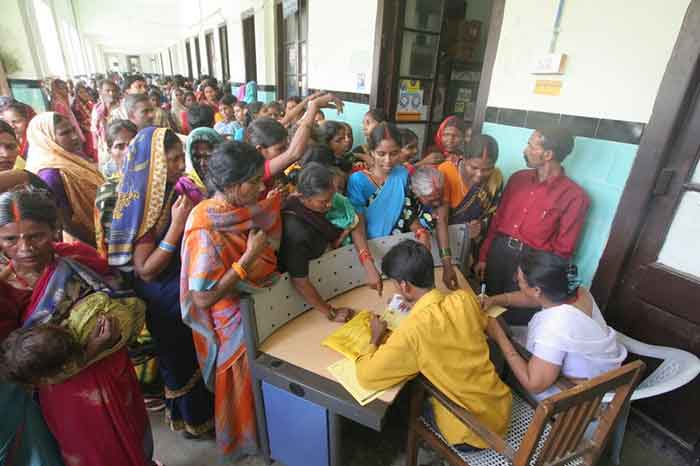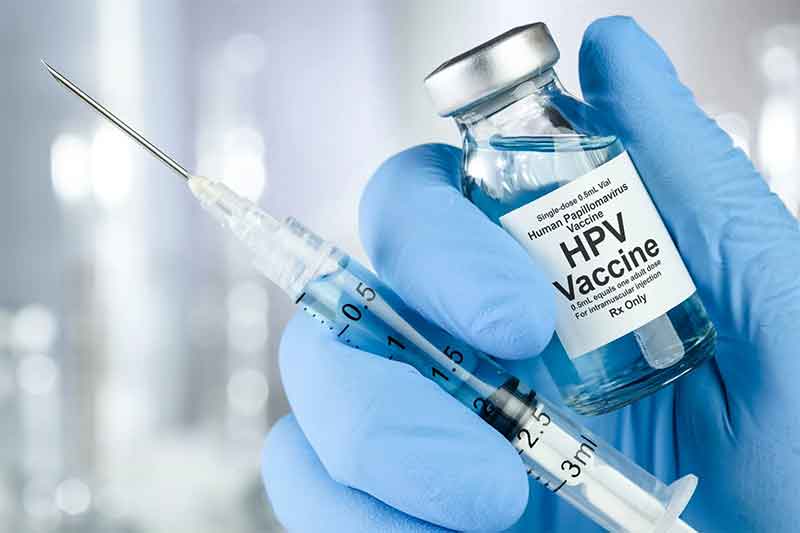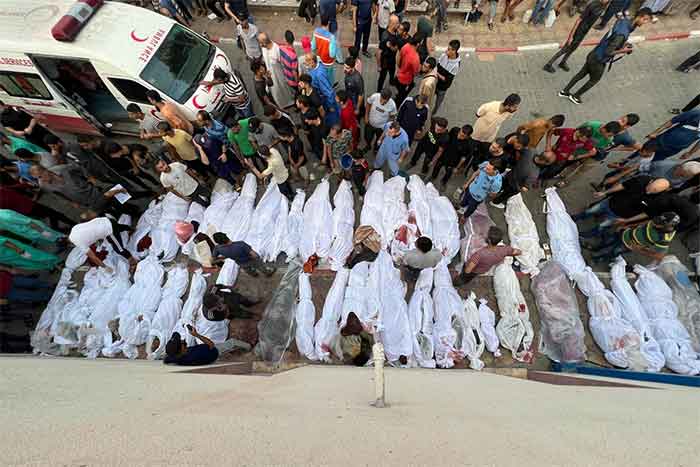
We have heard about ‘at a snail’s pace’ which normally describes slow action or movement especially when we think that doing it faster would be much more better. These days snails move faster than the State. It is possible to come to this conclusion even before the introduction if we assess the way our health system functions. We have a tendency and a long history of targets and goals with respect to health services and family planning and this is variously played around in terms of nomenclature. Targets and goals are set on the assumption that they would help us to achieve the objective, a typical management strategy.
The first goals for the Indian health services were suggested by the Bhore committee (1946), the recommendations of which laid the foundations of the health services in the country. These included both short-term program for two five year plan periods and a long-term program for a distant future. With respect to the primary units, the short-term goal was to set-up Primary Health Centers with coverage of 40000 population with secondary health center as a supervisory institution. In the long run, the committee visualized a PHC to serve a population of only 20000. The functions of the PHC included curative care to both inpatients and outpatients, maternal and child health services including family planning, communicable diseases, school health, environmental sanitation and health education. The Mudaliar committee appointed by the Government of India in 1959 and which submitted its report in 1961 noted that the primary health center program bears no resemblance to that visualized by the Bhore Committee. As a clear indication of ‘slower than snail syndrome’, it took more than three decades to even achieve something distantly similar to the even short-term goals of the Bhore committee.
The fate of family planning program is well-known which went through rough roads on a number of occasions. Adoption of a stringent control rather than welfare strategy, excessive use of coercion to achieve targets, use of methods with perceptible side-effects, thrusting targets on the personnel and disturbing the integrated working of the health services for intensive drives etc. are all reasons which created a negative stereotype regarding the program. The main reason for the failure in achieving the goals of Net Reproductive Rate- 1 could be attributed to the social determinants which the techno-centric program could not address. The thrust on family planning was a clear articulation of the class bias of the Indian polity influenced by international prescriptions.
It appears that after the Bhore Committee, the Indian policies were largely driven by not an endogenic felt need or logic but largely as a result of soft and hard policy pressure from international agencies. There were some internally driven reforms such as creation of Multi-Purpose Workers, Community Health Workers (modelled after the Chinese scheme) and the setting-up of Community Health Centres as a First Referral Unit. But except these institutional changes, the progress with respect to many disease control programs was very slow. And the result is quite evident! Tuberculosis is still widely prevalent in India as 26% of the total number of cases in the world are from India (2.690 million of the 10 million cases). The end of Tuberculosis is not in sight in the distant future although there are intensive strategies in place. There also assumptions that because patients first go to private practitioners and the private sector more than the public, they can contribute to ending TB. However, this should not be an alternative to a well-functioning, available and accessible public sector health services. There are many vulnerable states like Assam notified 48669 cases, Bihar, Madhya Pradesh, Maharashtra, Rajasthan, Uttar Pradesh and West Bengal. It is also possible that there is considerable under reporting of cases in many vulnerable states like Jharkhand, Chhattisgarh etc. There are still many other diseases such as Malaria, respiratory illnesses, diarrhoeal diseases, HIV/AIDS, Leptospirosis and other seasonal outbreaks which are still prevalent in many states of India. And now COVID-19 has become a new threat which has also upset the routine functioning of the health services.
Apart from this, Non-Communicable Diseases (NCDs) such as Cancer, Diabetes, Cardiovascular disease (CVD), Chronic Respiratory Diseases and Common Mental Disorders have also become major causes of disability and premature mortality. These emerging diseases apart from causing disabilities have also serious economic and developmental consequences. The present health infrastructure existing in many states do not have the capability to handle such a complex disease scenario.
It appears that the latest mantra- the three I’s- Investment, Institutional reforms and Insurance have not helped the poor in meeting their health needs. India’s spending on health care which is 1.28 0f the GDP is also the lowest in the world which the successive governments occasionally pledge to increase to higher rates. The actual policy prescriptions which follow such pledges do not reflect any such intentions. The poor in the country have to bear the brunt of such low levels of investments.
Huge out of pocket expenditure by households, distress financing and catastrophic spending are actually pushing people further down the socio-economic ladder. An estimated 808 million people across 133 countries are said to have incurred catastrophic health spending. Even Tuberculosis treatment incurred high expenditure among the poor in some countries. Studies based on the National Family Health Survey show that such spending patterns are common among the poor, less educated, uninsured, rural households, female headed households, households with members suffering from chronic illness and households with older people. Despite availability of Janani Suraksha Yojana and cash transfer etc., a large majority of mothers in the states of Punjab, Maharashtra, Gujarat, Meghalaya, Delhi, Rajasthan, Uttarakhand, Himanchal Pradesh, Kerala, Jammu and Kashmir, West Bengal, Uttar Pradesh, Chhattisgarh and Jharkhand have to incur huge expenditure for institutional deliveries (Mishra and Mohanty, 2019).
There is also a need to understand the formation of health policy at various stages which indicates the stated intention of the State to act or not act with respect to health or health services. The 1983 National Health Policy was formulated largely as a follow-up of the Health For All-2000 and the Primary Health Care strategy evolved at the Alma Ata PHC conference in1978. The policy paid lip service to the principles of PHC by stating that health and human development must be an integral component of the overall socio-economic developmental process in the country. It is thus of vital importance to ensure effective coordination between the health and its more intimately related sectors. It is, therefore, necessary to set up standing mechanisms, at the Centre and in the states within the “Health Team” approach. The 2003 National Health Policy did not echo the same visions of the 1983 policy when it welcomed the participation of the private sector in all areas of health services viz. primary, secondary and tertiary services. Both the plan documents and the health policy showed a clear shift from the earlier cautious approach to privatization. The 2017 National Health Policy was declared in the backdrop of Sustainable Development Goals of the United Nations and it also gave importance to Universal Health Coverage through Public-Private Partnerships. The intention to privatize government health care system and to gradually withdraw from health sector apart from an individual-family orientation as against a social determinants approach to health was implicit.
Evidently, the overall shifts with respect to policies- the intention to act or not to act with respect to health and health services show that the delays, disordering and disruptions have dominated the scene. Many of the existing communicable and the emerging non-communicable diseases need to be addressed with timely actions. And with the current COVID conditions influencing the routine functions of the public sector health care, the delays in health services responsiveness will be more glaring.
K. Rajasekharan Nayar is affiliated to Global Institute of Public Health and Santhigiri Research Foundation, Thiruvananthapuram. [email protected]
Mishra S and Mohanty SK (2019). Out-of-pocket expenditure and distress financing on institutional delivery in India. Int J Equity Health 18, 99 (2019). https://doi.org/10.1186/s12939-019-1001-7
K Rajasekharan Nayar (2011). Gaps in Goals: The history of goal-setting in health care in India Oman Medical Journal 26(1):1-3
SIGN UP FOR COUNTERCURRENTS DAILY NEWSLETTER

















































